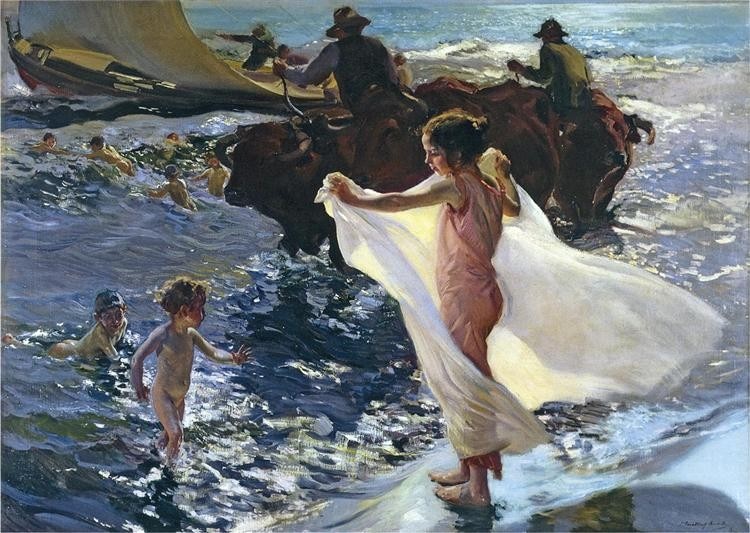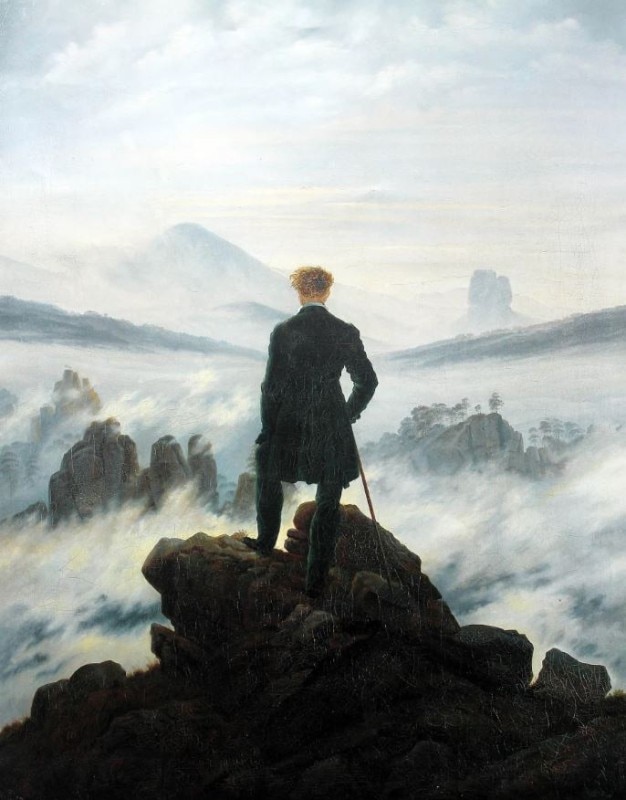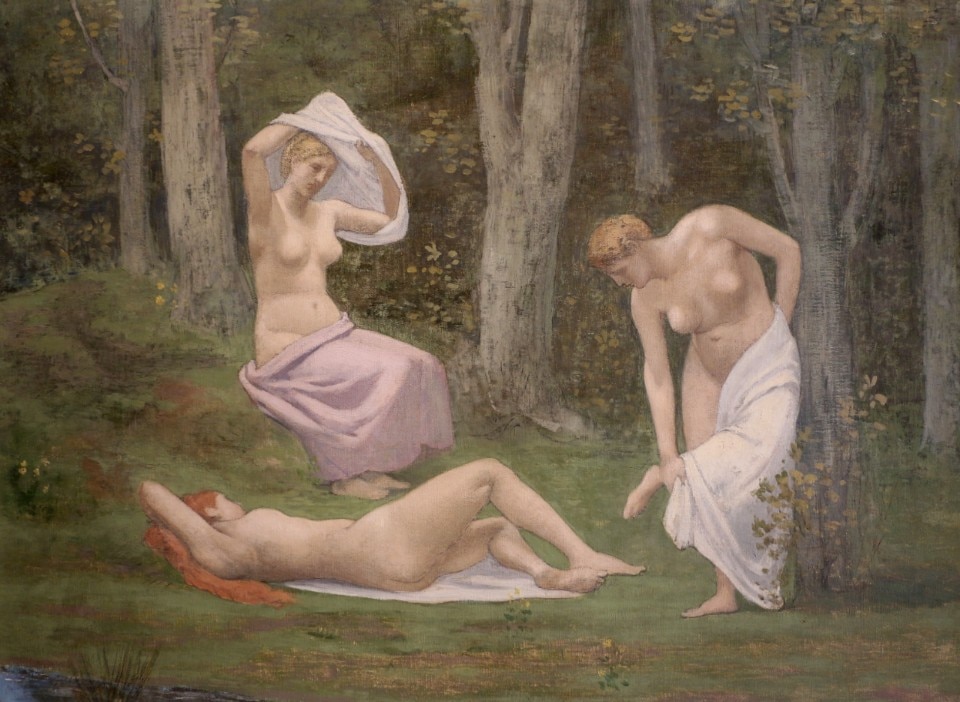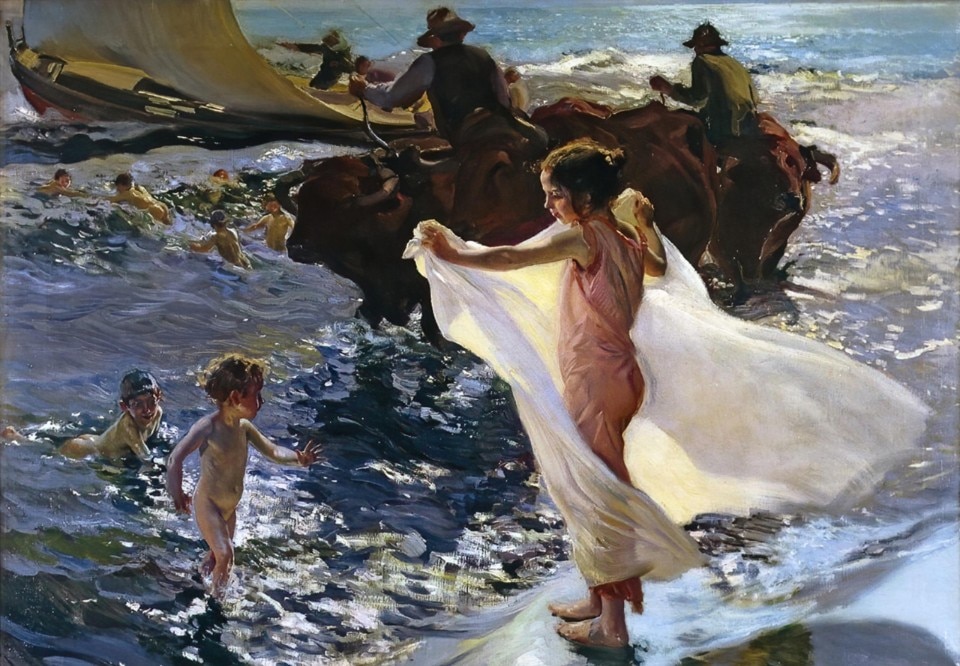“Pereira maintains he met him one summer’s day. A fine fresh sunny summer’s day and Lisbon was sparkling. It would seem that Pereira was in his office biting his pen, the editor-in-chief was away on holiday while he himself was saddled with getting together the culture page, because the Lisboa was now to have a culture page and he had been given the job. But he, Pereira, was meditating on death.” This is how Italian writer and academic Antonio Tabucchi describes the season we are leaving behind us. He reflects on the stasis of a time that returns, every year, less and less on time, be it early or late.

Joaquin Sorolla used to paint by the sea, fully and elegantly dressed, sheltered from the sun under a parasol. There was only him and the sea. Sorolla painted the summer season more than any other artist. Women, children, sand and, most often, the sea. The Spanish master knew how to portray summer through simple subjects, everyday scenes and light, shimmering white fabrics. The Bathing Hour, a painting from 1904, sums up his vision, his style and his feeling.
Boats and fishermen occupy the scene in the background, where the sun shines shyly. In the middle, two oxen with their riders animate the scene. In the exact centre we see the real subject – naked children playing in the water. The background noises of animals and men intervene silently, in sharp contrast to the serene gesture of the girl in the foreground ready to take the two youngest children in to dry them. We can sense the wind, the scent of the sea, its playfulness and its importance.

The sea generally symbolises the summer season and its slow and refreshing qualities, although for a long time men were scared of it. The sea was indomitable, stormy. However, the Venetian and Dutch painters, from the 18th century onwards, managed to tame those waves. They did it through history – the history of the sea, made up of military fleets and naval battles.
In art, the sea bears witness to the documentary interest of the vedutista, of the scientist, but waves and gales are not just scientific phenomena – they are also emotions. And so Romanticism began to paint the sea for its power, because it is untamable, like Caspar David Friedrich’s storms, which paralyse the motionless and powerless man observing them from the shore.

At the end of the 19th century, Pierre Puvis de Chavannes, a French symbolist, painted a work of extraordinary beauty that encompasses the wisdom of past centuries as well as the artist’s contemporaneity: Summer.
There are three women depicted on the shore of a lake, perhaps, or a river. Naked and half-naked. They are depicted as three goddesses, three Venuses, perhaps a Danae repeated in various poses. They are three nymphs, handmaidens or much more simply three women standing still and enjoying the warm weather. The poses are static, almost reminiscent of classical statues. Nature is still, the temperature after a swim is more pleasant. No noise, a moment immortalised by the gaze of the curious, the painter, who admires the women in their truest, simplest beauty.

As Ennio Flaiano used to say, “There is only one season – summer. So beautiful that the others revolve around it. Autumn remembers it, winter invokes it, spring envies it and tries to break it down in a childish way.”

